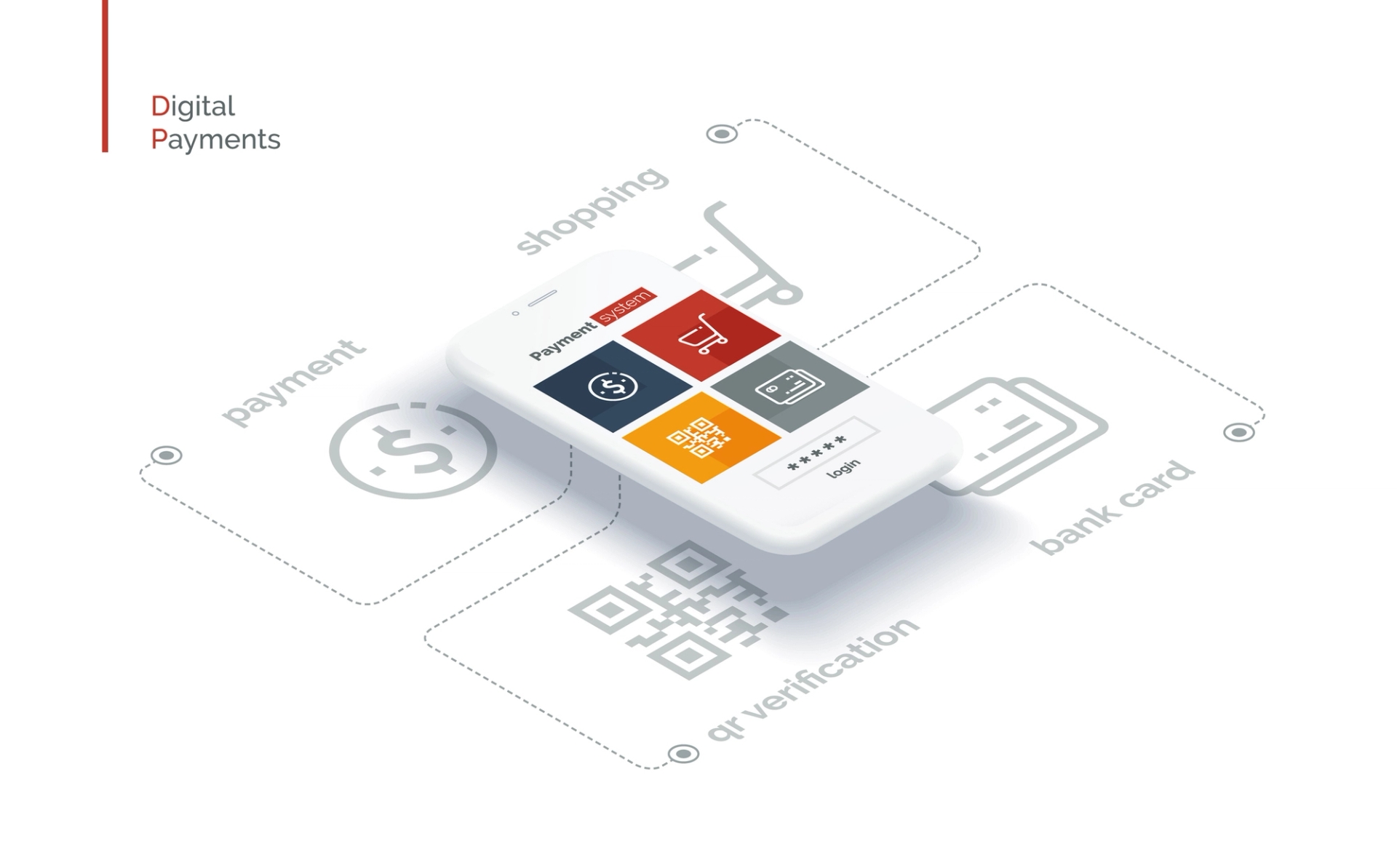13 Critical Event Registration Mistakes (and Proven Strategies to Avoid Them)
Discover the most common event registration mistakes—from slow processes to attendee drop-offs—and proven strategies to fix them. Includes contactless tips, faster check-in ideas & more.

Introduction: Why a Seamless Event Registration Process Matters in 2025 (and What’s at Stake)
In today's fast-paced events industry, managing event registrations has become both a necessity and a challenge for event planners.
Whether you are planning a virtual conference, hybrid seminar, or an in-person gala, a smooth registration process plays a pivotal role in ensuring attendee satisfaction and event success. The easiest way is to get an event registration software that features intuitive forms, smart automation, customization options, and integrated event workflows for streamlined attendee management.
From data management issues to limited customization options, even the smallest hiccups in the registration process can make all the difference. This blog explores more than ten common event registration challenges and offers actionable solutions to overcome them with the help of modern event management tools, and strategies.
All in all,
- It’s the first interaction with your brand.
- It impacts attendance rates and revenue.
- It helps collect critical attendee data.
- It affects your ability to personalize the entire event experience.
And you must nail it !
Avoid These 13 Common Event Registration Challenges That Can Hurt Attendance
1. Fix Unclear or Incomplete Event Information on Registration Pages and Emails
When potential attendees visit your registration site or open your event e-mails, the first thing they look for is clarity—what the event is about, where it’s happening, when it will take place, and why they should attend. To keep everyone on same page it is important to keep following things in mind.
What Common Information Is Missing from Event Registration Sites?
- Missing venue information or vague schedules:
- No speaker or agenda details:
- Unclear or Missing Ticket Options and Pricing Details
- Lack of Event Objectives or Key Takeaways
- Missing or Difficult-to-Find Registration Deadlines
- No Clear Call to Action (CTA)
- No Event Policies or Disclaimers
- Lack of Event Accessibility Details
How to Present Event Details Clearly to Boost Sign-Ups
- Include a clearly structured event schedule
- Add speaker bios, session topics, and benefits
- Display all ticket types and prices clearly.
- Highlight key takeaways and benefits early on.
- Make deadlines prominent with banners or pop-ups.
- Include a visible, direct CTA like “Register Now.”
- Include cancellation, refund, and privacy policies.
- Clearly outline accessibility features and offer accommodation requests.
Pro Tip: Use your event management platform to automate updates across channels, ensuring all event information is consistent and accurate.

2. Simplify Complicated Event Registration Forms for Better Completion Rates
Lengthy forms or unclear instructions often result in abandonment, especially on mobile devices used majorly for social media or emails. In order to ensure, mobile friendly registration process you should ensure that your forms are clean and easy to understand.
What Factors can make your Forms More Complex
- Too many required fields
- Confusing layout or steps
- Registration form design is not mobile-friendly
- Unclear or misleading instructions
- Lack of progress indicators
- No option to save and complete the form later
- A lengthy and complicated registration process can frustrate potential attendees, leading to higher abandonment rates.
How to Make Your Forms Better
- Use customizable registration forms with only necessary fields
- Break up the form into logical sections
- Ensure the design is mobile-optimized
- Provide clear, concise instructions for each step
- Add a progress bar to show attendees how far along they are
- Allow attendees to save their progress and complete the form later
Tip: Keep the registration experience simple and intuitive to encourage early sign-ups.
3. Offer Flexible Payment and Event Ticketing Options to Maximize Conversions
Restricted payment systems and inflexible event registration tools can discourage potential attendees. Therefore, one should ensure the event software doesn't have any of the payment issues which are mentioned below.
Top Issues with Payment & Registration Platforms:
- Lack of support for different currencies or payment methods
- Limited customization choices for different ticket types
- No integration with your event app or platform
- No support for installment payments or "pay later" options
- Inability to apply multiple promo codes or complex pricing structures
- Registration platform doesn’t support tax/VAT configuration for different regions
- Inefficient on-site check-in processes can create long queues and delays, frustrating attendees upon arrival.
Smart Solutions to Support Multiple Payment Gateways
- Choose an event registration system that offers multiple payment options (credit/debit cards, UPI, wallets, etc.)
- Enable early bird pricing, group discounts, and promo codes
- Make sure the event registration platform integrates seamlessly with other event management software
- Offer payment flexibility like split payments or buy-now-pay-later options to reduce drop-offs
- Choose a platform that supports tiered ticketing and custom pricing logic
- Ensure your system can handle international tax rules, currency conversions, and localized invoices
- Self-registration kiosks should be enabled at the on-site events. You can also try Eco-Friendly Onsite Badge Printing for Sustainable Events
Tip: Explore Azavista’s payment integration guide to avoid registration drop-offs.

4. Eliminate Attendee Data Errors with Smarter Registration Tools
Collecting incomplete or incorrect registration data leads to communication errors and operational issues on the event day. This makes it very important to use event registration tools which provide value as per your need.
Common Data Management Mistakes in Event Registration
- Attendee data entered incorrectly
- No real-time data validation
- Delayed confirmation emails
- Duplicate registrations or inconsistent data across platforms
- No centralized database for registration and check-in
- Manual data entry increasing the chance of human error
Best Practices for Ensuring Accurate, Real-Time Registration Data
- Use tools that validate data in real-time (e.g., auto-formatting, error flags)
- Integrate CRM systems and event registration platforms for data consistency
- Automate confirmation and reminder emails to reduce human dependency
- Set up duplicate entry detection to avoid data clutter
- Use a centralized attendee database for easy access and updates
- Sync registration data with your event app, check-in system, and other tools to avoid mismatches
Tip: Accurate attendee registration improves logistics, marketing efforts, and post-event engagement.
5. Build Stronger Attendee Communication After Registration
A successful event registration process doesn’t end when someone signs up. Rather it is where the event experience begins for a lot of people. Event planners must keep the following things in mind to ensure they keep they attendees hooked.
What Poor Post-Registration Communication Looks Like:
- Attendees don’t receive timely updates
- No follow-ups before the event
- Poor use of social media platforms to engage registrants
- Overloading attendees with too many generic emails
- No centralized place for attendees to find updates or FAQs — here are some event mistakes to avoid to ensure a better attendee experience.
How to Improve Engagement With Automated Follow-Up Emails and Updates
- Set up automated email workflows for reminders and key event updates
- Create social media countdown campaigns to build excitement
- Use your event app to send real-time push notifications
- Segment communication based on attendee type (e.g., speaker, VIP, sponsor)
- Create a dedicated event microsite or portal with live updates, FAQs, and schedules
Tip: Use Countdown Campaigns and Event Portals for Maximum Reach. Also, you can check out our guide on using email marketing to drive registrations.
6. Personalize Your Registration Journey to Boost Event Engagement
Personalization leads to a better attendee experience and boosts registration rates. Generic forms and one-size-fits-all content reduce engagement. Event registration system should be designed in a way which offers personalized experience as per the event attendees.
Top Mistakes When You Ignore Personalization in Event Registration:
- Not segmenting registration forms by attendee type (e.g., speaker, guest, sponsor)
- Using generic emails instead of personalized messages
- Failing to tailor content or offers based on attendee behavior or history
Steps to Create Personalized Registration Flows and Messaging:
- Customize forms based on attendee categories to capture relevant details
- Use dynamic content in confirmation and follow-up emails (name, ticket type, sessions of interest)
- Include relevant content from previous or similar events (like blogs, videos, testimonials)
- Offer personalized session or networking suggestions during registration
- Address attendees by name and role in all communication for stronger connection

7. Avoid Long Queues by Optimizing Your Onsite Event Check-In
Even with a flawless online registration, the actual event can flop if onsite processes aren’t smooth. Event organizers must make it a point to do a dry run and check all touch points at event venue which might affect the experience.
Why Your Check-In Process Might Be Ruining Attendee Experience:
- Long queues due to manual check-ins
- Event badges not ready or incorrect
- Limited use of event software at the venue
- Insufficient staff or unclear instructions at check-in points
How to Implement a Smooth, Tech-Enabled Check-In Flow:
- Use mobile event apps for fast, contactless check-in
- Pre-print event badges or offer self-check-in kiosks
- Train staff and volunteers on using your event registration system efficiently
- Create clear signage and instructions at entry points
- Set up dedicated lines for VIPs, speakers, or pre-verified attendees
Tip: For complete onsite strategies, read our guide to event check-in efficiency.
8. Choose Flexible Registration Software That Can Grow With Your Event
A flexible system gives event professionals the freedom to innovate and adapt. As your event evolves, so should your tools. Unfortunately, many platforms lack flexibility. Event management software which provides seamless attendee satisfaction starting from event registration itself are the ones which win in this industry.
Issues with Rigid Systems That Don’t Adapt to Event Needs:
- Inability to update registration options
- Limited integration with other event management tools
- Difficulty scaling for future events
- Lack of customization for different event types or formats
- No ability to clone or duplicate settings for recurring events
How to Make Your Event Registration More Scalable and Customizable:
- Use an event management platform that scales with your event size and complexity
- Ensure your registration system allows last-minute edits and adjustments
- Choose software that supports third-party integrations and plug-ins
- Look for tools with modular design so you can enable features as needed
- Opt for platforms that offer templates or cloning features for recurring events
9. Prioritize Data Security Concerns and Ensure Compliance
Attendees trust you with their data—don’t let them down.With increased digitization comes the risk of data breaches and non-compliance with privacy regulations. Event planners must ensure that they are not using any such malpractices and they must make this clear in registration forms.
Common data management issues in Online Event Registration:
- Insecure registration platforms
- Weak customer data handling practices
- Lack of data encryption or tokenization
- Poor access control for staff handling attendee data
- Vulnerability to phishing or spoofing attacks targeting registrants
How to Ensure GDPR-Compliant, Secure Registration Systems:
- Use event registration platforms with built-in security protocols (SSL encryption, two-factor authentication)
- Regularly audit data practices and ensure GDPR, CCPA, or local compliance
- Limit data access to authorized team members only
- Provide secure payment gateways with PCI compliance
- Clearly communicate privacy policies and how attendee data is used

10. Strengthen Your Post-Event Follow-Up and Feedback Collection Strategy
Without gathering attendee feedback or analyzing registration data, you miss out on opportunities to improve. You must look out for poor user experience if any and give attendees opportunity to call out such experiences. This can easily be done by various post event engagement tools.
Important attendee engagement data that is mostly overlooked:
- No surveys or polls post-event
- No use of data to optimize the next registration process
- Lack of thank-you emails or follow-ups
- Not sharing event highlights or outcomes with attendees
How to Turn Feedback Into Actionable Insights for Future Events:
- Send automated surveys right after the event when impressions are fresh
- Analyze registration trends (drop-off points, sign-up peaks) for smarter planning
- Compare performance with previous or similar events to benchmark progress
- Share post-event wrap-ups with key takeaways, photos, or videos
- Thank attendees for participating and keep them engaged for future events
- Strong customer support during the event registration
- Good feedback loops transform the entire event planning process over time.
Tip: Use the data analytics to improve your future events
11. Manage Hybrid Event Registrations Without Confusing Attendees
With hybrid events becoming the norm, managing registrations for both virtual and in-person attendees can be complex. Both versions can have different event details, therefore, ensuring that registration process is clear and simple for both of them can come with probable challenges.
Biggest Challenges in Handling In-Person vs Virtual Registrations:
- Different registration requirements for each audience type
- Difficulty syncing virtual and on-site attendee data
- Complications in offering hybrid ticket options
- Inconsistent communication or content delivery across formats
How to Deliver a Seamless Hybrid Registration Experience:
- Use an event registration platform that supports hybrid functionality
- Clearly distinguish between virtual and physical tickets during sign-up
- Sync your registration system with your event app to ensure a consistent experience
- Offer format-specific communication (e.g., venue maps for in-person, tech guides for virtual)
- Track engagement metrics separately to improve future hybrid event planning
12. Localize Your Event Registration for Global Attendees
Global audiences bring language preferences and regional compliance challenges. This makes it difficult to keep attendees informed with timely updates and personalized instructions. A localized registration experience boosts international attendee engagement and trust.
Common Issues with Language and Currency in Event Registration:
- Limited translation options on registration sites
- Incompatibility with international address or phone formats
- Unfamiliar payment systems for international users
- Lack of region-specific content or offers
- No time zone support for virtual events or sessions
How to Create Multilingual, Region-Specific Registration Pages:
- Choose registration platforms with multilingual and localization support
- Ensure your payment systems handle international transactions smoothly (currency conversion, tax regulations)
- Use region-specific marketing to enhance comfort and trust (translations, local testimonials)
- Implement time zone features to display event times correctly for global attendees
- Offer international customer support for attendees facing technical or payment issues
13. Align Event Marketing and Registration Data to Improve ROI
When marketing and registration tools don’t talk to each other, you miss valuable insights. You must ensure that all your event registration process collect data which shall help you in understanding what is driving registration and where can it be improved.
How Disconnected Data Hurts Your Event Performance Tracking:
- No visibility into which campaigns drive registrations
- Marketing efforts and registration performance tracked separately
- Poor targeting in future events due to lack of data
Solutions to Integrate Marketing Campaigns with Registration Systems:
- Integrate marketing automation tools with your event registration system for seamless tracking
- Use UTM tracking to link registrations back to specific campaigns and channels
- Create dashboards that unify marketing and registration data for better decision-making
- Use data segmentation to target specific attendee groups with relevant messages
- Align marketing and registration teams to ensure consistent messaging and shared goals
Tip: Use UTM Tracking and Dashboards for Smarter Targeting

Bonus Tip: Track Emerging Trends in Event Registration and Attendee Experience
The last bit is to ensure that you are up to date with the current trends and innovations in the event registry, as the industry is continuously evolving to improve event registration experience and it must have already solved some of the challenges you are facing. Some of the trends are mentioned below,
- In 2025, event planners will prioritize experiential activations for registration booths to enhance attendee engagement.
- Event professionals have begun to offer customizable ticket pricing for attendees to broaden participation and ensure accessibility.
- Event planners will increasingly use eco-friendly event badges to meet the growing demand for sustainability in events.
- Vendors will help with event badge preparation, streamlining the process and saving time for event planners.
Conclusion: Transforming Event Management Through Smarter Registration
Event registration is more than just filling out a form—it’s a vital part of the event experience. With the right event technology, a smooth registration process, and strategic planning, you can turn common challenges into opportunities for growth.
From customizable registration forms to integrated event apps and real-time attendee data, the right tools empower event organizers to plan successful events, streamline operations, and elevate attendee engagement.
Let Azavista Solve All Your Issues!
Want to see how your registration platform stacks up? Explore Azavista’s event management solutions to future-proof your registration systems.
FAQs
Q1. What is the biggest challenge in event registration?
The biggest challenge in event registration is creating a seamless, mobile-friendly registration experience that balances simplicity with functionality. Without intuitive forms, automation, and attendee data validation, drop-offs increase and attendee engagement suffers.
Q2. How can I increase event sign-ups and registration rates?
Boost sign-ups by using clear CTAs, offering early-bird discounts, enabling flexible ticketing options, and sending automated reminder emails. A user-friendly event registration platform with integrated marketing tools and payment gateways can significantly improve conversion rates.
Q3. What are the best event registration practices in 2025?
Top practices include using customizable registration forms, multilingual support, real-time data validation, personalized attendee journeys, hybrid ticketing options, and GDPR-compliant event software. These practices help reduce drop-offs and improve event ROI.
Q4. How is hybrid event registration different from in-person or virtual registration?
Hybrid registration involves managing both in-person and virtual attendees. It requires format-specific ticketing, synced communication workflows, and integrated event apps to offer a unified experience across channels.
Q5. Which tools help optimize the event registration process?
Event management platforms like Azavista help optimize your process with features like customizable forms, attendee segmentation, integrated CRM tools, automated emails, flexible payment systems, and mobile check-in solutions.
Q6. Why is attendee data accuracy important in registration?
Accurate attendee data ensures personalized communication, smooth onsite check-in, and better post-event engagement. Smart registration tools help with real-time validation, error detection, and syncing with event apps or CRMs.
Q7. How can I enhance the attendee experience through better event registration?
Offer a personalized, mobile-optimized journey with dynamic forms, progress bars, and real-time updates. Use segmentation to tailor content and automate confirmations, reminders, and FAQs using your event registration software.
Q8. What payment features should an event registration platform support?
Your registration system should support credit/debit cards, UPI, international currencies, mobile wallets, tax/VAT rules, and flexible models like buy-now-pay-later or group ticketing to improve accessibility and reduce friction.
Q9. What are the top event registration trends in 2025?
Key trends include AI-powered personalization, sustainable event badges, experiential check-in booths, customizable pricing, and deeper integration between registration systems and event marketing platforms.
Q10. How do I align event marketing and registration data to track ROI?
Integrate UTM tracking, CRM systems, and marketing automation tools with your registration platform. This allows you to attribute sign-ups to campaigns, improve segmentation, and optimize future event marketing strategies.
More Event Registration











